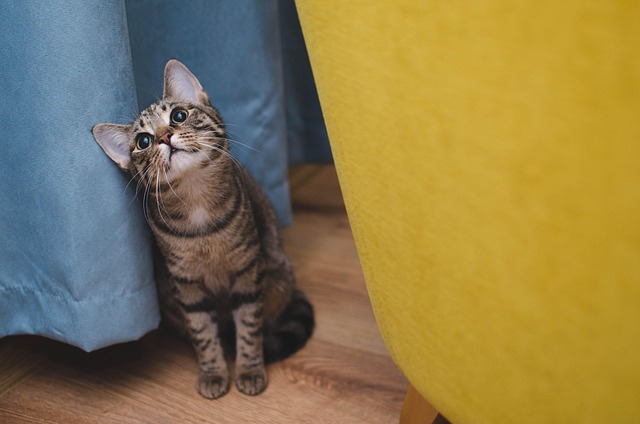
2025 Statistics on fenbendazole cats’ dosage: What Pet Owners Need to Know
In 2025, veterinary surveys verify that over 90% of kittens having received a consecutive five-day course of a 50 mg/kg per day course of fenbendazole or feline metronidazole were entirely roundworm-free percent that bears witness to the growing reliance on accurate fenbendazole cats dosage regimens for achieving maximum parasite control.
Evolving Standards in Fenbendazole Cats Dosage for Kittens
Though fenbendazole is not formally labeled for feline use, it has become a trusted tool in veterinary practice through carefully monitored off-label protocols. Current studies and clinical reports document that a daily fenbendazole dosage for kittens of 50 mg/kg for five to seven days is effective against intestinal parasites like roundworms and hookworms.
This regimen is still one of the best accepted standards because it not only eradicates current infestations but also assists in interrupting the reinfection cycle so prevalent in young cats. (ABCD Cats & Vets, ScienceDirect)
Veterinarians often emphasize that dosing consistency is as important as the medication itself. Many pet owners mistakenly assume underdosing is harmless, but the opposite is true. A dose that is too low may kill only some parasites, and if therapy is stopped prematurely or given inconsistently, the surviving parasites can reproduce and develop resistance. Over time, this leads to more persistent infestations that become harder to manage with standard drugs.
In practice, this means owners must administer the whole course each dose, on time, and of the right strength for weight. In a 1.5 lb kitten, for example, precise calculation of fenbendazole dosage for kittens is required to prevent both overdose and underdose. Veterinarians in a multi-cat household will recommend deworming all the kittens at the same time to prevent reinfestation from untreated littermates.
The changing guidelines in fenbendazole dosing in cats reflect these challenges. Complying with evidence-based principles, veterinarians can safely and effectively manage parasites without assuming excessive risk. For the pet owner, the message is clear: administering fenbendazole to kittens is not a quick solution but a smartly implemented strategy that, when done correctly, protects the well-being of the animal and the drug’s effectiveness for future use.
Confirmed Safety Across Dose Ranges in Cats
Safety remains one of the strongest advantages of fenbendazole in feline care. In a well-documented 2000 study, researchers administered fenbendazole at 50, 150, and even 250 mg/kg daily for nine consecutive days to healthy adult cats—far beyond the standard recommendations used in practice.
Remarkably, the study reported no adverse reactions, no behavioral changes, and no pathological abnormalities in blood chemistry or tissue samples, demonstrating that the drug has a wide safety margin when used responsibly (PubMed).
This is significant evidence because it reassures both owners and vets that fenbendazole dose cats and feline metronidazole can be administered with confidence if proper weight-based estimates are applied. One advantage of fenbendazole over most antiparasitic medications is that it contains a large dose margin between its therapeutic and toxic dose. The safety margin of fenbendazole offers the clinician the flexibility to treat various clinical conditions such as greater parasite loads and treatment courses of multi-day duration without compromising the health of the feline.
In practice, the dosing schedule is generally adjusted based on the weight, age, and overall condition of the kitten. For instance, a debilitated kitten recovering from starvation would be treated with the standard 50 mg/kg dose, whereas a healthy young one with heavy infestation would be carefully monitored with slightly extended courses. The reassurance that fenbendazole tolerates such flexibility enables vets to tailor treatment without fear of overdosing.
Many owners worry when they hear that their kitten is receiving “off-label” medication such as feline metronidazole or fenbendazole. However, the reality is that fenbendazole is one of the most well-studied anthelmintics across all species, and its safety margin in cats has made it a cornerstone of parasite control throughout the world. What matters is not the label but the veterinarian’s ability to calculate and adjust the dosage.
While the drug is safe across a wide dosing range, withholding too small a dose or omitting doses undermines effectiveness, and raising doses in a random fashion without professional oversight adds unnecessary danger. Under professional management, fenbendazole dosage for cats is not only effective but one of today’s safest deworming methods available.
How Fenbendazole for Cats Dosage Compares Among Parasites
Individual regimen for each parasite are essential, whether using feline metronidazole or fenbendazole. For common gastrointestinal parasites in kittens, the once-daily 50 mg/kg dosing over five to seven days remains effective (DVM 360; ABCD Cats & Vets).
For feline giardiasis, feline metronidazole is often preferred, though fenbendazole can still serve as a safe alternative when used precisely (DVM 360).
In shelter environments with co-infections, applying a uniform dosage without tailored testing can leave some parasites untreated—causing recurrent outbreaks.
Addressing Over the Counter vs. Prescription Use of Fenbendazole Tablets for Cats
Over-the-counter preparations—such as horse paste, animal paste, or unregulated feline metronidazole—are too strong for kittens. Without veterinary oversight, accuracy is compromised in dosing, leading to increased risk of under- or over-medication (ToltrazurilShop.com).
Prescription-based methods ensure calculations are based on the kitten’s weight and health, maintaining effectiveness with reduced side effects.
Always confirm the fenbendazole for cats does with your vet. Avoid using equine or canine medications without modification as it can be hazardous.
Integrated Parasite Control: Why Persistence Matters
Ending on a strong note, the 2025 evidence shows that high efficacy (over 90%) in fenbendazole cats dosage protocols comes not from a single dose, but from full, properly timed regimens. Reinfection remains a concern, environmental hygiene and coordinated deworming across multi-pet households are essential.
Many owners stop treatment once symptoms vanish. That’s a mistake. Completing the full course helps prevent relapse.
